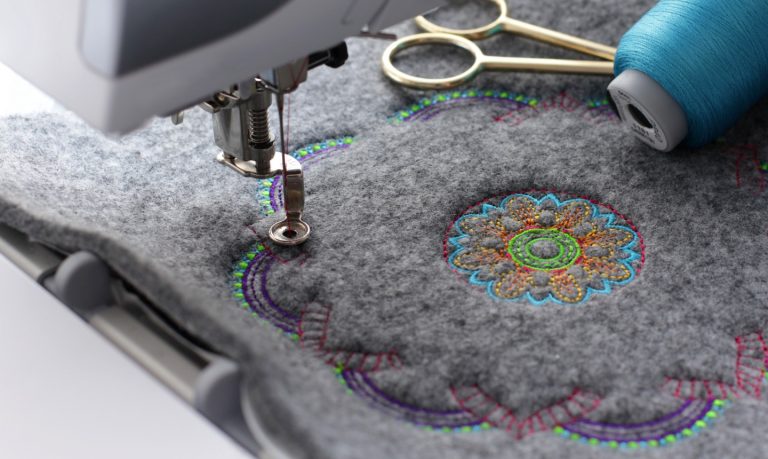Efficient Digitizing for Embroidery: Quick Turnaround
Efficient Digitizing for Embroidery: Quick Turnaround
Blog Article
Understanding the Needlework Digitizing Process: Your Ultimate Guide
Embroidery digitizing is a careful craft that needs precision and proficiency to translate complex styles into digital formats for maker needlework. As craftsmens get started on this trip to understand the needlework digitizing process, a detailed understanding of the fundamentals sets the structure for quality. Nevertheless, past the simple understanding exists a realm of advanced software application, specialized devices, and nuanced methods waiting to be discovered. By diving into the nuances of digitizing, one can open a world of imaginative opportunities and boost their needlework projects to new heights.

Understanding Needlework Digitizing Essentials
Embroidery digitizing fundamentals create the foundation upon which detailed designs are converted into machine-readable layouts for precise stitching. This first step in the needlework digitizing process is essential for making certain that the last stitched item is a faithful representation of the original style. Recognizing embroidery digitizing essentials involves realizing key principles such as stitch types, sew instructions, density, underlay, and pull payment.
Sew kinds play an important duty in establishing the visual and textural end result of the stitched design. By choosing the proper stitch kind, whether it be satin, fill, or running stitch, digitizers can accomplish the preferred impact and enhance the general high quality of the embroidery. Additionally, sew instructions affects the circulation and dimension of the design, while thickness establishes the spacing and insurance coverage of the stitches.
Moreover, underlay sewing supplies stability to the layout by protecting the fabric and protecting against distortion throughout the embroidery process. Draw settlement is one more vital consideration to counteract the all-natural tendency of material to contract when sewn. Understanding these embroidery digitizing fundamentals is basic for producing professional-quality embroidered products.
Selecting the Right Digitizing Software Application
Choosing the ideal digitizing software program is a vital decision that dramatically influences the effectiveness and quality of the embroidery digitizing process. Digitizing for Embroidery. When choosing the best digitizing software, it is necessary to think about aspects such as the complexity of designs you plan to create, the user-friendliness of the software program, the degree of customer support used, and the compatibility with your needlework maker
There are numerous digitizing software application options readily available out there, ranging from fundamental programs for beginners to sophisticated software program for professional digitizers. Some preferred choices consist of Wilcom EmbroideryStudio, Hatch Embroidery Software Program, and PulseID. These software program packages supply a wide variety of tools and attributes to help you produce intricate layouts with convenience.
Prior to choosing, it is a good idea to explore the various software application options via complimentary trials or trials to establish which one finest matches your demands. Additionally, checking out reviews and looking for referrals from experienced digitizers can give beneficial insights into the strengths and weak points of each software application plan (Digitizing for Embroidery). By carefully assessing your needs and contrasting the functions of various digitizing software, you can make an educated choice that improves your needlework digitizing workflow
Digitizing Tools and Methods

Optimizing Design Setup for Needlework
Understanding the complexities of design setups is fundamental in attaining ideal results in the embroidery digitizing procedure, structure upon the structure laid by comprehending digitizing devices and strategies. When maximizing style setups for needlework, it is important to consider aspects such as stitch type, density, underlay, draw compensation, and enrollment. Registration settings straighten different elements of the style properly, preserving overall layout integrity.

Troubleshooting Common Digitizing Issues
When experiencing typical digitizing concerns throughout the needlework process, visit this site right here it is necessary to comprehend the source and carry out effective remedies immediately. One common problem is stitch thickness issues, where stitches might be also dense, creating the textile to tighten, or as well sporadic, resulting in spaces in the design. Readjusting the stitch thickness setups in the digitizing software program can aid solve this issue.
Another constant difficulty is string breaks during the needlework process. This can occur as a result of different reasons such as inaccurate tension settings, plain needles, or using low-grade thread. Guaranteeing correct maintenance of the needlework maker, including regular needle adjustments and tension changes, can reduce the event of string breaks.
Furthermore, design enrollment errors can cause misaligned elements within the needlework layout. Inspecting the layout alignment in the digitizing software program and making needed changes prior to sewing can help in avoiding this issue. By dealing with these typical digitizing problems without delay and effectively, you can guarantee a smoother embroidery procedure and high-quality finished products.
Verdict
In verdict, grasping the embroidery digitizing procedure calls for a strong understanding of the fundamentals, the ideal option of software program, and expertise of tools and strategies. Enhancing style setups and fixing usual digitizing concerns are crucial steps in making sure premium needlework outcomes. By complying with these steps carefully, one can accomplish precision and efficiency in the digitizing procedure.
Report this page